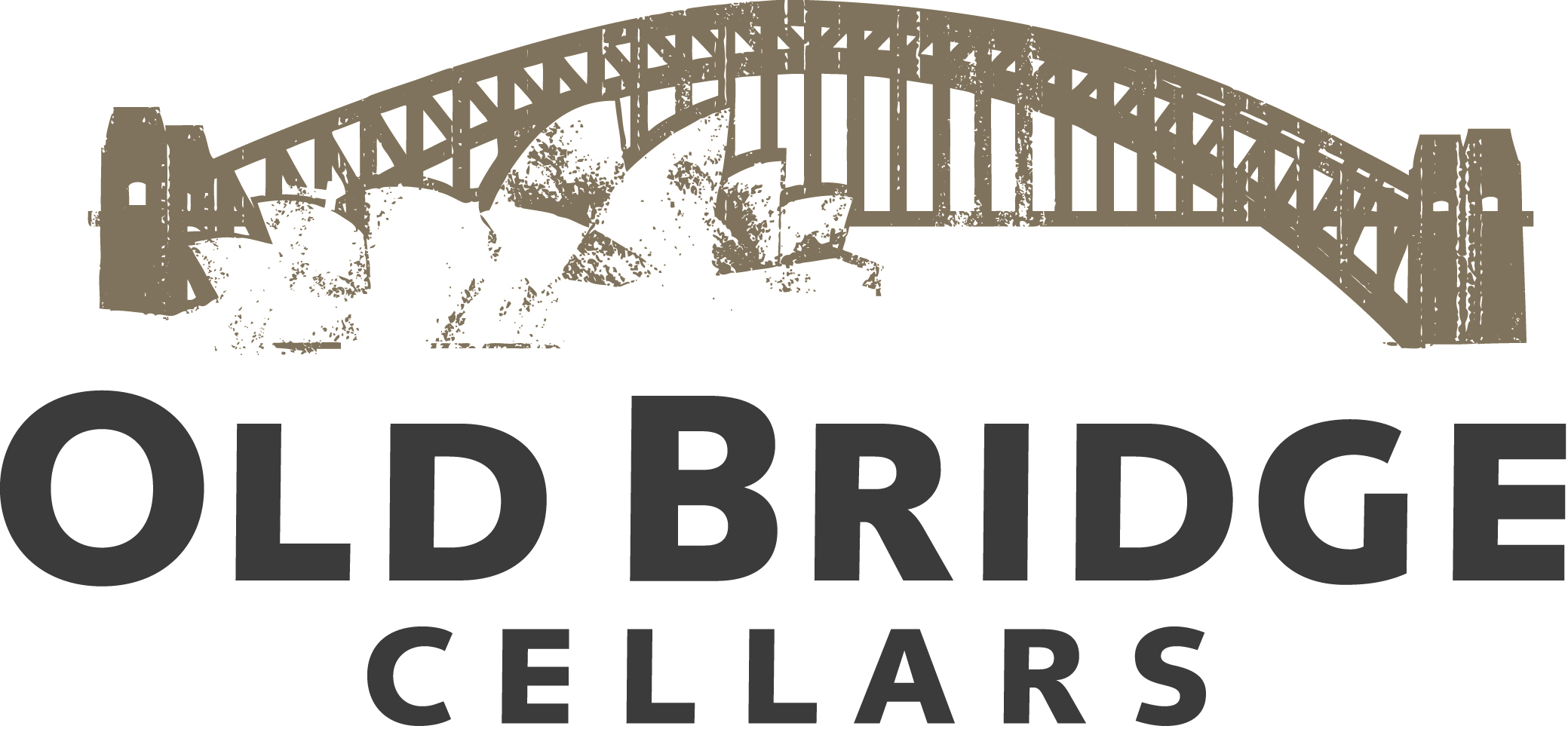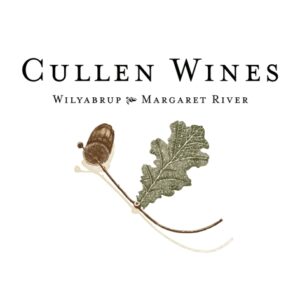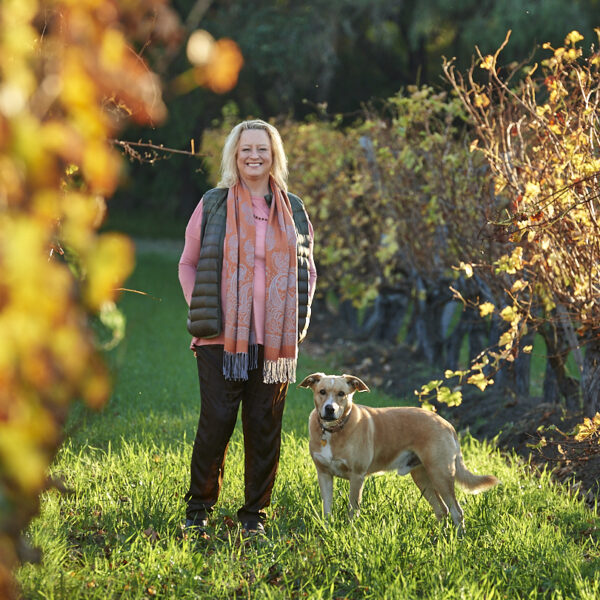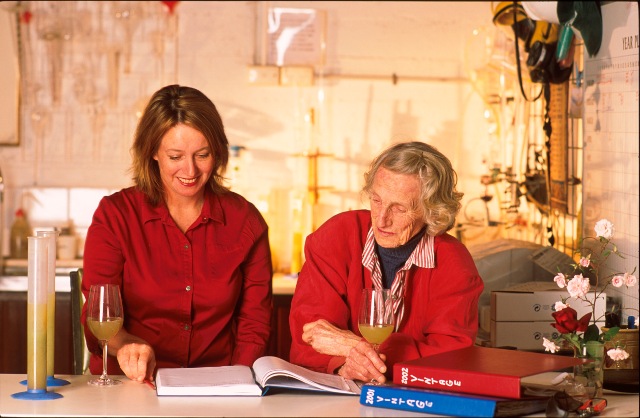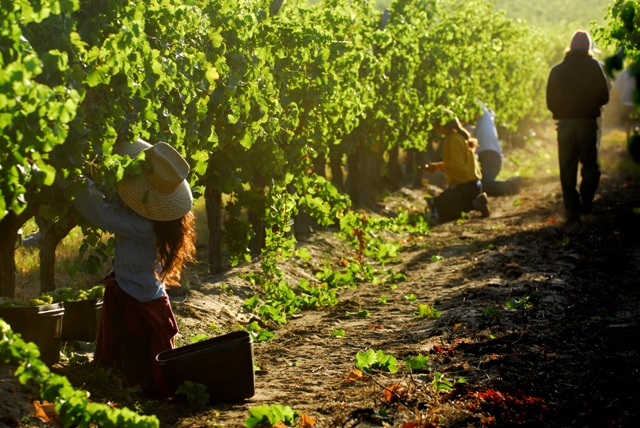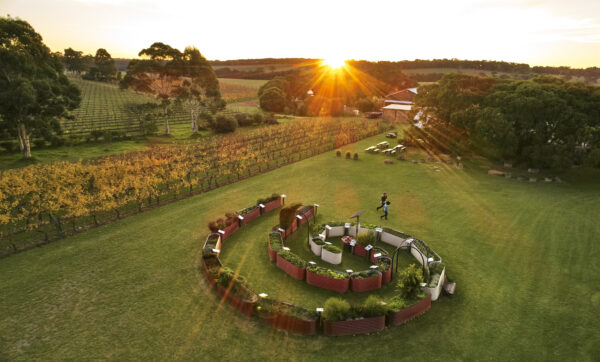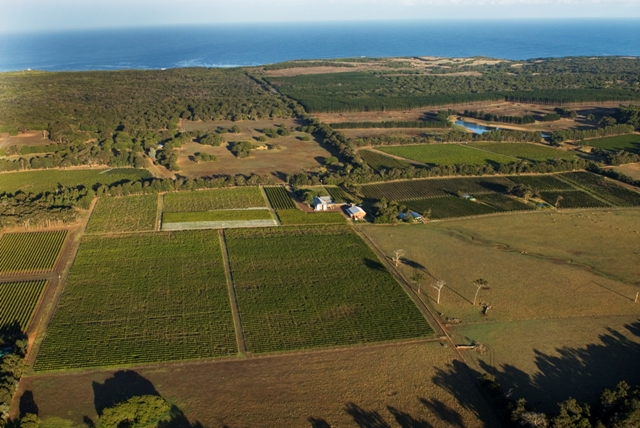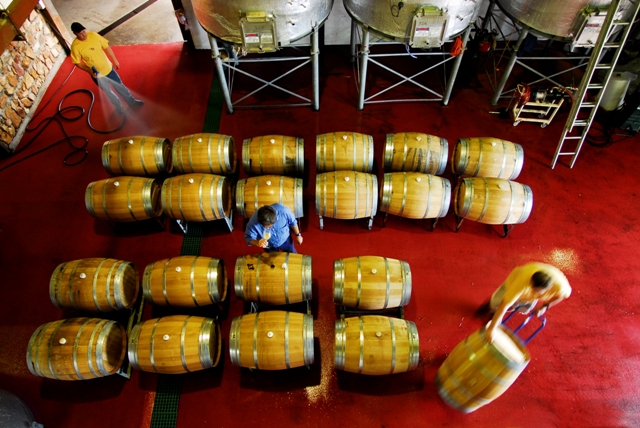- Founded
- 1971 by Kevin and Diana Cullen
- Owner
- The Cullen Family
- Winemaker
- Vanya Cullen
- Size
- 69 acres
- Climate
- Mediterranean
- Key Varietals
- Cabernet Sauvignon, Chardonnay, Sauvignon Blanc
Margaret River, Australia

Wines
Dancing in the Sun White Blend
Grace Madeline Sauvignon Blanc Semillon
Kevin John Chardonnay
Amber
Cabernet Merlot
Mangan Vineyard Red Moon Red Blend
Vanya Cabernet Sauvignon
Diana Madeline
Don’t see what you’re looking for? Contact us at marketing@obcwines.com
"The Diana Madeline bottling has long been one of Australia's iconic red wines, while the Chardonnay Kevin John is becoming one of the Country's most collectible whites. It's difficult to overstate the importance and influence of the Cullen family and their winery to Australia's wine industry."
About
A founding winery of Margaret River, Cullen was established in 1971 by pioneering winemakers Kevin and Diana Cullen. In redefining the style of Australian Cabernet Sauvignon produced in the 1970s, the fledgling estate caught the attention of the nation. Since then, an unrelenting commitment to quality, integrity, and biodynamics has positioned Cullen as one of Australia’s greatest estates. Vanya Cullen, the founders’ daughter and chief winemaker for more than 30 years is one of the country’s trailblazers leading the way in not only biodynamics but also as Australia’s first certified carbon neutral winery and dining room, as they strive for the purest and most transparent expression of place in in their wine and food. Australian critic James Halliday named Cullen the top winery in Western Australia in his 2023 roundup, and #7 in Australia’s Top 10 Wineries overall in the Halliday Wine Companion.
Visit WebsiteWinemaking
The foundation of the Cullen winemaking philosophy is to achieve optimum site expression with minimal intervention. Having inherited a vineyard that yields some of the Margaret River region’s most distinctive fruit, Vanya Cullen all but lets the wines make themselves. The team painstakingly hand-sorts all fruit, makes use of indigenous yeasts, avoids all winemaking additions, uses French oak judiciously and minimizes fining and filtering prior to bottling. In this way, the Cullens are working with nature rather than attempting to control it, therein allowing the wines to be defined by a sense of place rather than winemaking techniques.
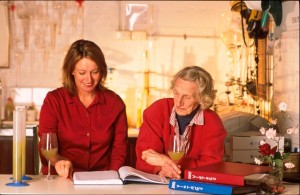
Viticulture
The Cullen vineyard is one of Margaret River’s greatest viticultural sites. Carefully selected by founders Kevin and Diana Cullen, the well-draining, gravelly soils are complemented by a maritime climate of warm, sun-filled days tempered by the surrounding Indian and Southern oceans. The mature, low-yielding vineyard is dry-grown, hand-tended and trellised according to variety. In addition, since taking the reins in 1989, Vanya Cullen has steered the estate through biodynamic certification, with the aim of optimizing soil health and achieving a pure expression of site. This union of outstanding natural attributes and constant evolution provides Cullen with a rare platform from which to craft benchmark quality, terroir driven wines.
Cullen Vineyard – Cullen’s primary vineyards feature mature vines planted in 1971, 1976 and 1988. Varietal plantings as follows:
Cabernet Sauvignon – 28 acres
Chardonnay – 18.4 acres
Sauvignon Blanc – 13.6 acres
Merlot – 3.2 acres
Semillon – 2.8 acres
Pinot Noir – 2.3 acres
Cabernet Franc – 1 acre
Additional fruit is sourced where necessary from the following vineyards which are owned and operated by Cullen family members in line with the organic principles of the Cullen Estate vineyard.
Mangan Vineyard (50 acres) – adjacent to the Cullen Estate and planted between 1995 and 1997 to Petit Verdot, Merlot, Malbec, Sauvignon Blanc and Semillon.
Ellens Ridge Vineyard (37 acres) – around 5 miles south of the Cullen Estate, planted between 1997 and 1999 to Chardonnay, Sauvignon Blanc, Semillon, Cabernet Sauvignon, Merlot and Cabernet Franc.
Certified Biodynamic Viticulture
In 2004 the Cullen Vineyard became certified A Grade Biodynamic by the BFA (the Biological Farmers of Australia, now known as Australian Organic Limited) and the Mangan Vineyard and Winery followed in 2008. The winery also farms a biodynamic vegetable garden, which supplements the organic and biodynamic produce in the Cullen Restaurant. In 2019 Cullen became the first certified carbon neutral winery, wine room and dining room in Australia.
Climate
The Margaret River region enjoys a mild Mediterranean climate dominated by maritime influences. The presence of the ocean, three miles from Cullen, means that this is the dominant influence on the weather patterns there. The northern Wilyabrup area, where the vineyard is situated, is characterized by warmth and ample sunshine. There is some exposure to the north and northeast winds and some tendency for diurnal east-west air convection cells to form due to the lie of the land.
Soils
On the Cullen Estate vineyard, the Cabernet Sauvignon, Merlot, Cabernet Franc, Sauvignon Blanc and Chardonnay vines are planted in the Forest Grove soils. These consist of gravelly, granite-y, sandy topsoil for approximately 1 – 2 feet, laterite and then clay at about 3 feet. This is considered to be the best soil for premium grape production in the Margaret River region and is particularly suitable for Cabernet. The Semillon is planted on sandy soil over clay at about 4 feet.
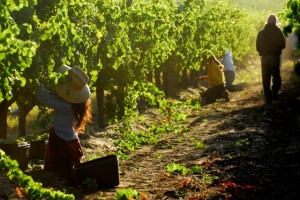
Viticulture by Variety
Sauvignon Blanc/Semillon
Sauvignon Blanc has yielded between 0.5 and 3.2 tons/acre and Semillon from 1 to 3.8 tons/acre. The first Cullen Semillon Sauvignon Blanc, made in 1979, was a blend of Semillon (80%) and Sauvignon Blanc (20%). The proportions of the two varieties may vary from year to year depending on the quality of each variety.
Chardonnay
Chardonnay requires cooler temperatures for dormancy. When Margaret River has warm winters, the vines do not go dormant and thus have very poor budburst and a reduced yield. Earlier bud burst makes new growth on the Chardonnay vines vulnerable to damage from spring storms and so these have greater susceptibility to powdery mildew and Botrytis. Crop level has been between 0.5 and 2 tons/acre. The Chardonnay is netted each year as protection from marauding birds. Normally, increased plantings will reduce bird problems in an area. Surprisingly, the opposite has been the case in Wilyabrup in recent years.
After experimenting with the original Sunraysia, Scott Henry and Vertical Shoot Positioning (VSP) , it was found that that the VSP was best for Chardonnay. The skins of the Chardonnay berries are thin and the vigor of the vine medium to light (unlike the Cabernet Sauvignon and Sauvignon Blanc in particular). In some cases, without the protection of adequate leaf cover, the berries become sunburnt.
Clone 1 (IC698I27), locally known as the Gin Gin clone, with its characteristic hen and chicken bunches on the vine, is the most widely used Chardonnay clone in Margaret River. The yields from this clone have always been low (even without crop reduction from storms, hail or birds) at around 1.6 tons/acre and this is one of the reasons for the intense fruit concentration of the Cullen Chardonnays.
Since 1999, fruit has been included from the Ellens Ridge vineyard of Mark Hands and Ariane Cullen. The 8 acres of Chardonnay planted there in 1997 shows southern Margaret River flavors such as dried pear, grapefruit and peach. The estate vineyard fruit, on the other hand, tends towards citrus, lemon and quince.
Cabernet Sauvignon/Merlot
The cornerstone of the viticultural practices at Cullen is organic management of the vineyard and the use of Scott-Henry trellises to give maximum exposure of the vines to sunlight. Organic management and eventually biodynamic management is seen as a way to nurture the old vines and keep them in good health, so as to produce the best quality fruit.
Continual Quality Trials
Sensory trials based on tasting the grapes and wines were carried out over a ten year period with the Lyre, Scott Henry and standard Sunraysia T trellis systems. Juice flavor profiles were assessed in 1993, a high cloud year and a difficult vintage for reds. The analysis of composition of the grapes grown on the three trellises, i.e. sugar, pH, and acidity were the same, but the flavor profiles and total phenolic levels were significantly different.
The Scott Henry trellis produced riper dark fruits and better quality tannins than either the Lyre or T -trellis. Wines were made from the three batches using the same winemaking approach and were tasted five years later when the differences appeared more significant. The wine made from fruit grown on the Scott Henry trellises was bright and vibrant, while that from the T-trellis showed unripe flavors and green tannins. The anthocyanins and total phenolic levels were almost double with the Scott Henry batch, which is better for quality.
As a result of these trials, all of the Cabernet Sauvignon, Cabernet Franc and Merlot on the Cullen estate vineyard are grown on the Scott-Henry trellis.
The mild Mediterranean climate means that, if the berries of Cabernet Sauvignon, Cabernet Franc and Merlot are exposed to the sunlight early enough, they toughen up and do not suffer sunburn or phenolic bitterness in the skins. This exposure has given finer grained tannins and less green flavors and harsh tannins in the fully ripe red grapes.
Yields and Harvest Dates
With few exceptions, crop levels have been constant at around 2 tons per acre. The Cabernet Sauvignon has ranged between 0.5 and 2.9 tons per acre, Cabernet Franc between 1 and 4.3 tons/acre and Merlot 0.5 and 4.5 tons/acre.
In the first 28 years at Cullen, the beginning of the Cabernet Sauvignon harvest has ranged from the first week in March until the last week in April.
